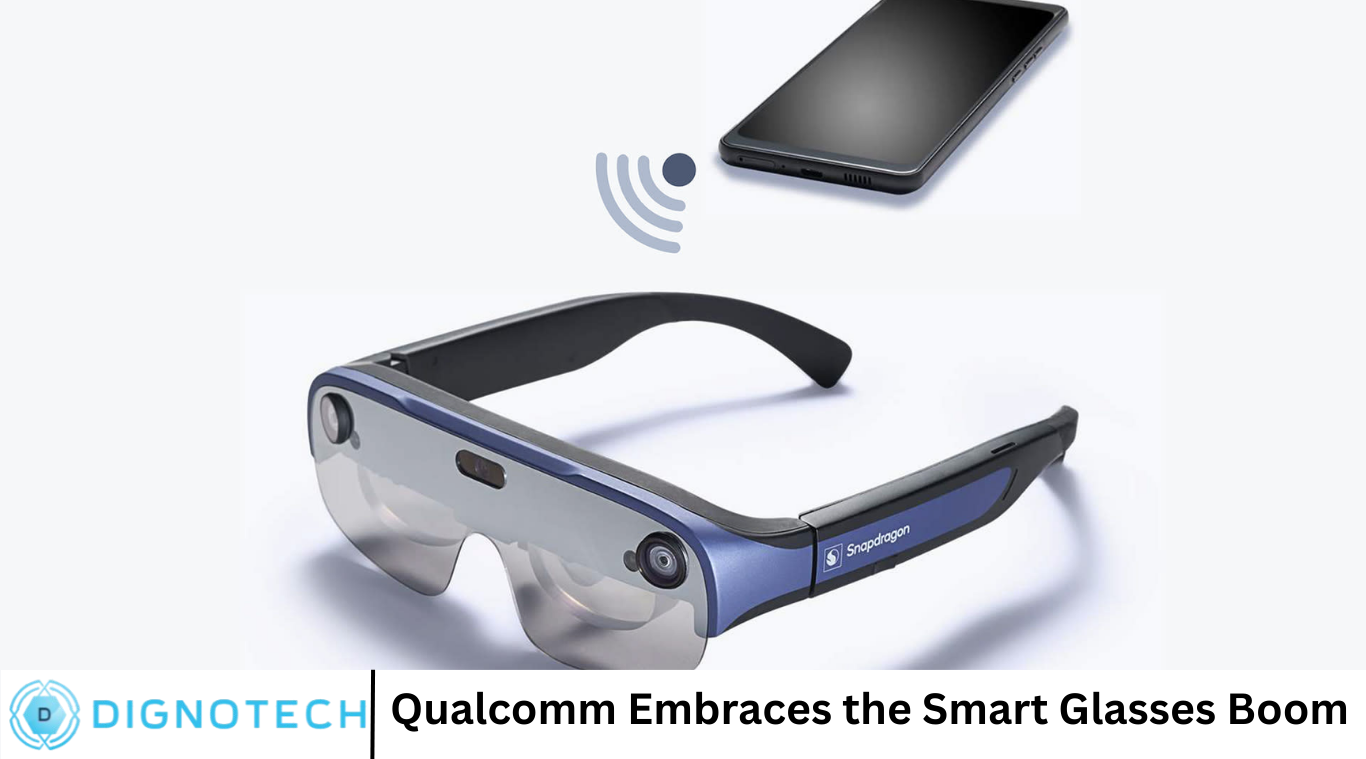Qualcomm Embraces the Smart Glasses Boom

Qualcomm is stepping confidently into the smart glasses revolution, positioning itself as a core player in the next wave of wearable tech. Through innovative chipsets, cross-industry partnerships, and strategic diversification, the company aims to empower smart glasses with standalone AI capabilities, seamless AR experiences, and widespread adoption.
Pioneering with Snapdragon AR1+ Gen 1
At a recent industry showcase, Qualcomm unveiled its Snapdragon AR1+ Gen 1 chipset—a compact, power-efficient platform specifically designed for smart glasses. At roughly 26% smaller than its predecessor, this chip supports on-device AI processing using small language models up to one billion parameters, enabling real-time assistance without relying on smartphones or the cloud. This marks a key shift toward fully independent smart glasses, enhancing speed, privacy, and usability.
Leading the XR Ecosystem
Qualcomm already dominates the XR system-on-chip market, with an estimated 90% share in 2024. Its Snapdragon Spaces XR platform, combined with chipset leadership, solidifies its influence in both AR and VR devices. The emerging trend toward lightweight, efficient, AI-powered smart glasses plays directly into Qualcomm’s strengths as the sector evolves.
Powering Today’s Smart Glasses
Qualcomm’s chips are already integrated into popular smart eyewear like Ray-Ban Meta glasses, providing core processing, sensors, cameras, and AI-driven features. The company’s platform expertise and hardware readiness have allowed it to be a go-to partner for brands exploring smart glasses as a mainstream extension of smartphones.
Expanding Across Regions and Verticals
In India, Qualcomm is working closely with local auto companies to develop vehicle-linked smart glasses aimed at two- and four-wheeler users. These glasses would offer navigational and contextual assistance without relying on smartphone mounting—enhancing safety and convenience. Qualcomm’s strong local engineering presence and its partnership with eyewear brands and automakers position it well for practical, on-the-road use cases.
Collaborations with Tech Giants
Qualcomm collaborates with global leaders like Google and Samsung on a mixed-reality smart glasses initiative, blending smartphone companion experiences into lightweight wearables. At the same time, Qualcomm has helped shape Android XR, a unified platform showcased with partners such as Warby Parker and Gentle Monster—bringing Gemini AI and hands-free AR interactions into a sleek form factor.
Business Momentum and Diversification
Qualcomm’s push into smart glasses and other AI-driven segments is now contributing meaningfully to its revenue. The company reported a 10% year-over-year increase, with strong growth in smart devices, automotive, and IoT segments. The move to expand beyond smartphones—through key acquisitions, like that of Alphawave Semi—is broadening Qualcomm’s role in AI and wearable computing.
Shaping the Future of Wearables
The smart glasses revolution is gaining traction worldwide. Qualcomm’s edge in chipmaking, developer platforms, regional deployment, and AI defines its leadership. By combining advanced hardware with global partnerships and ecosystem-building, the company is making smart glasses not just futuristic tech—but an everyday computing platform.
Frequently Asked Questions
What makes the Snapdragon AR1+ Gen 1 significant for smart glasses?
Its smaller size, power efficiency, and AI capabilities allow smart glasses to operate independently, providing fast, secure, and seamless user experiences.
How dominant is Qualcomm in the XR chipset market?
Qualcomm controls around 90% of the XR system-on-chip market, thanks to early commitments and its Snapdragon Spaces platform.
Are Qualcomm-powered smart glasses already on the market?
Yes—Ray-Ban Meta smart glasses use Qualcomm’s XR chips to deliver AR features, sensors, and mobile-level AI without bulky hardware.
What’s happening in India with smart glasses?
Qualcomm is developing integration with vehicle usage—creating smart glasses for riders that offer navigational assistance and reduce reliance on phones.
How is Qualcomm collaborating with Google and Samsung?
They are jointly exploring mixed-reality glasses paired with smartphones and supporting Android XR—a platform designed for lightweight, AI-capable smart eyewear.
Is smart glasses a meaningful revenue booster for Qualcomm?
Yes—growth in smart devices, including smart glasses, helped Qualcomm’s Q3 revenue grow 10%, alongside gains in automotive and IoT.
What differentiates Qualcomm’s approach to smart glasses?
Qualcomm blends hardware innovation, AI, ecosystem partnerships, and global deployment to transform smart glasses from niche gadgets into everyday computing tools.
Conclusion
Qualcomm’s foray into smart glasses isn’t just opportunistic—it’s foundational. By driving innovation in compact, AI-enabled hardware, cultivating developer ecosystems, and forging global partnerships, Qualcomm is shaping smart eyewear as the next computing frontier. The company isn’t just riding the wave; it’s helping build it.



